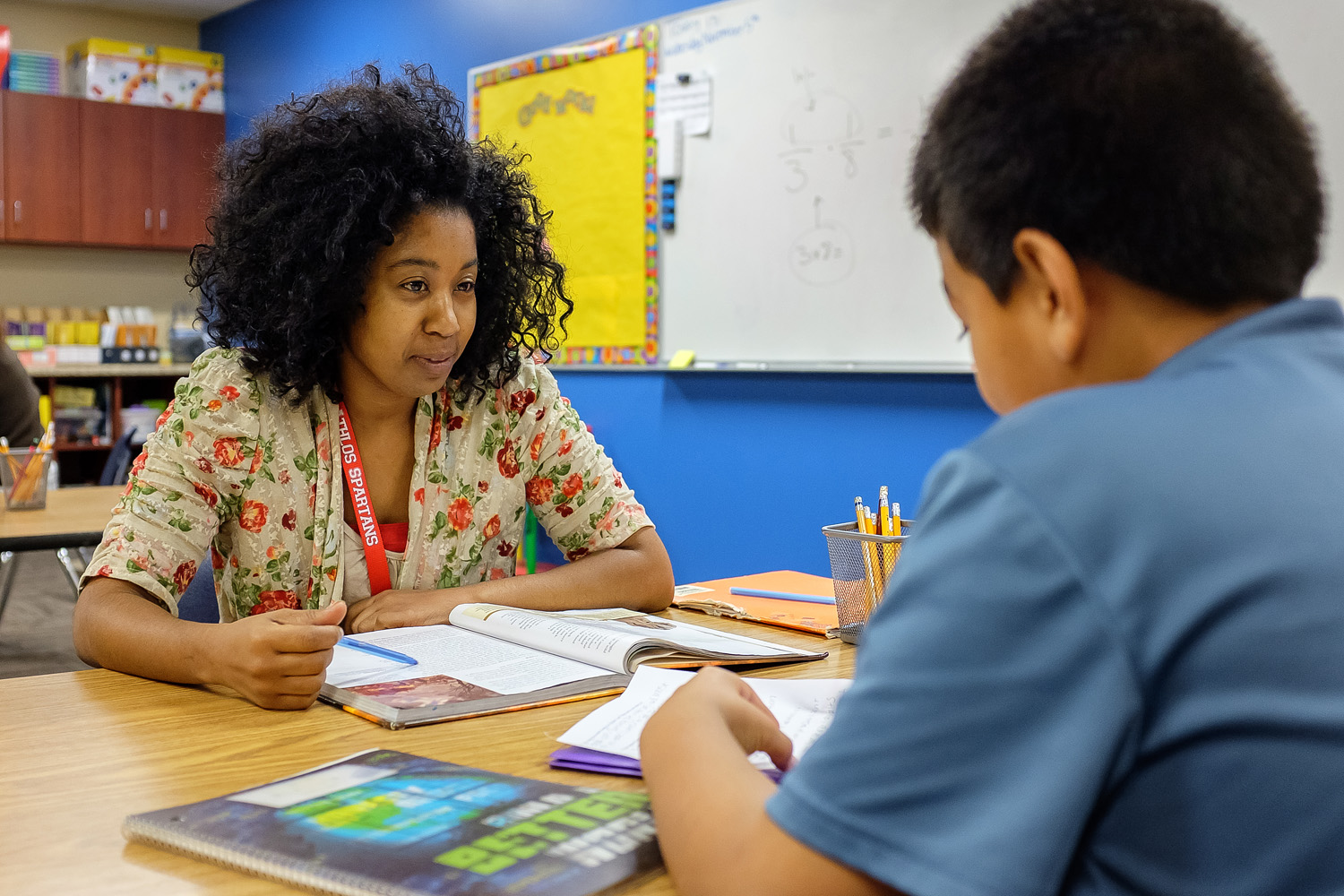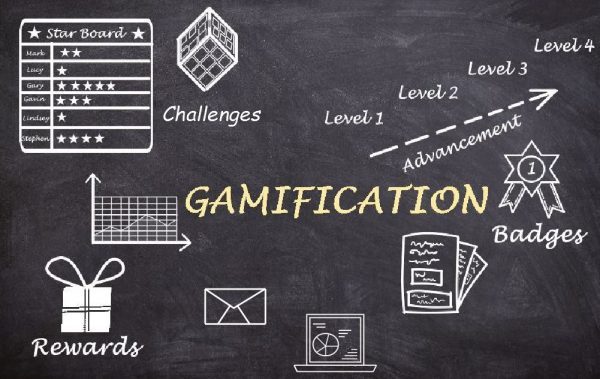“If an assessment asks students to evaluate and create but our instruction asks only that they remember and comprehend, then we’ve taken a wrong direction” states Mike Fisher. Assessments should be frequent, varied and build upon the concepts (content) and skills (literacy) taught in the class. Some say, each assessment holds a privilege. Meaning, a multiple-choice assessments privileges one group of students in the class, while a video project privileges another group of students in the class. How can you assess your students equitably? How can you ensure no student or student groups have an “assessment privilege” over the others? What does it look like when each student has an opportunity to show what they know, utilizing a modality or creative outlet of their choice?
In our Learning Map this week, we are considering assessments. Some questions to help guide our thinking for this assignment are: What are the essential questions that you’re asking? What will students do to demonstrate achievement of the content and literacy standards? How will you know students will understand? What evidence will you collect? When will you use formative assessments in the learning process? When will you use a summative assessment to see what the students have learned and mastered?
Instructions
Resources
We were to review the following resources before we began your assignment, as they informed our work.
Read
- Summative vs. Formative Assessments
- Alternative Assessment Ideas
- Non-Traditional Assessment Models
- Content-Area Literacy Strategies for Art, Math, Music and PE
Watch
- Comprehensive Assessments
- Making Low-Stakes Practices Tests More Effective
- 60-Second Strategy: Interview Assessments
- Bilingual Program: Academic Content in 2 Languages
- Performance-Based Assessment: Engaging Students in Chemistry
- Performance-Based Assessment: Making Math Relevant
We will think critically about assessments and instructional literacy experiences for this assignment. We will:
- Identify two types of formative assessments that are commonly used in our content area
- Example: In a middle school math class, the teacher asks students to come up to the board to solve an algebraic equation in front of the class.
- Identify 1 type of summative assessment that is commonly used in our content area
- Example: In a high school Spanish class, an end-of-chapter multiple-choice exam measures vocabulary comprehension and application.
- Describe three uncommon assessments (can be formative or summative) in our content area. Each uncommon assessment needs to address a content standard(s) and a literacy standard. By “uncommon” we mean out-of-the-box, creative and unique. These are the types of assessments that allow for each student to show you what they know in a non-traditional way.
- If it helped, we could select three focus students (a student with a learning disability, a student learning English, and a student reading above grade level) to plan these uncommon assessments for.
- Example: An uncommon assessment in a high school chemistry class is a video lab report that contains interactive media, music and narration.
- Reflect on this activity by answering these questions:
- Of the assessments you shared, where was bias presented? Does the assessment have perspectives or intentions that are noticeable? How might this impact a student taking the assessment?
- After coming up with uncommon assessments, how does that impact your learning map? Is there anything you want to improve or change?
- What assessments that you shared, support language learners? Support students with learning disabilities? Support students with diverse assets and needs?
All of the components above were to be included in a written paper. The paper should be 500 – 700 words, use APA formatting (title page, page numbers, etc.), and contain 3 to 5 citations.
Innovative Assessment Practices in High School Algebra
Frank Jamison
Sanford College of Education, National University
ITL520: Academic Language & Literacy
Professor Spencer Burrows
November 26, 2023
Innovative Assessment Practices in High School Algebra
Assessing student understanding is crucial for effective instruction in high school algebra. This paper explores various types of assessments, including common and uncommon approaches, focusing on their potential impact on diverse learners. Throughout this exploration, we will examine the biases that may exist in assessments, how uncommon assessments can enhance the learning process, and how these assessments cater to the needs of students with diverse backgrounds.
Common Formative Assessments
Whiteboard Problem Solving
A common formative assessment in high school algebra involves students solving algebraic equations on whiteboards in front of the class. This assesses not only their ability to solve problems but also their communication skills and understanding of mathematical concepts.
Exit Tickets on Algebraic Operations
Exit tickets are a common formative assessment method where students answer questions related to algebraic operations before leaving the class. This assessment provides teachers with a quick and effective way to assess student understanding and inform the next day’s instruction (University of San Diego-Professional & Continuing Education, 2022).
Common Summative Assessment
End of Unit Test
A common summative assessment for high school algebra is an end-of-unit test, which usually comprises various problem types to evaluate students’ overall understanding of the unit’s content (Derrell, 2015).
Uncommon Assessments for Diverse Learners
Interactive Digital Story Problems
The assessment utilizes interactive digital stories to present algebraic problems, making it accessible to diverse learners, including students with learning disabilities. By doing so, it not only tests their mathematical skills but also evaluates their ability to apply these skills in real-world scenarios (Rajendran & Md Yunus, 2021). This approach aligns with content standards for solving equations and literacy standards in interpreting and creating narratives. The interactive nature of the assessment caters to different learning styles and provides visual and auditory cues to aid understanding, making it especially helpful for students with learning disabilities.
Multilingual Math Comic Creation
Creating a multilingual math comic effectively assesses the understanding of algebraic concepts among students learning English. This assessment evaluates their mathematical knowledge and communication ability in different languages (Byrne, 2017; Tom, 2012). It aligns with the content standards for algebra and literacy standards for language development. This assessment recognizes and values the linguistic diversity of English language learners, allowing them to express their understanding in their preferred language while promoting language acquisition in the target language.
One, Two, Three… Action!
This assessment is designed to encourage students to explore mathematical concepts in a creative and diverse way. They can perform a play, create a movie, or compose a song, incorporating dramatic, visual, and auditory elements to accommodate different learning styles (Prodigy, 2023). This exercise helps students think critically about abstract mathematical concepts and challenges them to communicate these ideas in non-traditional ways. It is a great way to explore math from multiple angles and expand problem-solving skills.
Reflection
After careful consideration, it has come to light that traditional assessments may favor students with specific learning styles or cultural backgrounds (Prodigy, 2023). To address this issue, alternative assessments have been introduced to provide diverse ways for students to demonstrate their knowledge. For instance, interactive digital story problems and multilingual math comic creation are unique assessments that recognize and appreciate the value of different learning styles and linguistic backgrounds.
Introducing uncommon assessments has a positive impact on the learning process. It helps to gain a more comprehensive understanding of students’ abilities, moving beyond memorization to practical application and creativity. These alternative assessments can be used to answer some of the big questions in the learning map, such as using Interactive Digital Story Problems and Multilingual Math Comic Creation to answer questions about communication skills. However, it is crucial to ensure that these assessments are fair and accessible to all students.
The multilingual math comic creation is an excellent tool for supporting language learners. It directly addresses the needs of English language learners by fostering language development alongside mathematical understanding. In addition, the interactive digital story and One, Two, Three…Action! assessments provide language support through visual and auditory elements. These assessments come in varied formats, which allows for personalized approaches accommodating diverse learning needs. This makes it an excellent resource for students with learning disabilities.
In conclusion, examining common and uncommon assessments in high school algebra can help improve inclusivity, cater to diverse learning needs, and provide a more comprehensive understanding of students’ abilities. By integrating such assessments, educators can create a fairer and more engaging learning atmosphere for all students (Prodigy, 2023).
References
Byrne, R. (2017, May 30). Practical Ed Tech Tip of the Week—Multilingual Comic Creation and Writing Prompts. Practical Ed Tech. https://practicaledtech.com/2017/05/29/practical-ed-tech-tip-of-the-week-multilingual-comic-creation-and-writing-prompts/
Derrell, T. (2015, June 3). Formative vs. Summative Assessment: What’s the Difference? | AIU. https://www.aiuniv.edu/blog/2015/june/formative-vs-summative
Prodigy. (2023, July 7). 10 Summative Assessment Examples to Try This School Year. Prodigy. https://www.prodigygame.com/main-en/blog/summative-assessment/
Rajendran, V., & Md Yunus, M. (2021). Interactive Learning via Digital Storytelling in Teaching and Learning. International Journal of Education and Literacy Studies, 9(3), 78. https://doi.org/10.7575/aiac.ijels.v.9n.3p.78
Tom, T. (2012, July 1). 40 Alternative Assessment Ideas for Learning. TeachHUB. https://www.teachhub.com/teaching-strategies/2012/06/40-alternative-assessment-ideas-for-learning/
University of San Diego-Professional & Continuing Education. (2022, March 21). 14 Examples of Formative Assessment [+FAQs]. University of San Diego – Professional & Continuing Education. https://pce.sandiego.edu/14-examples-of-formative-assessment-faqs/



